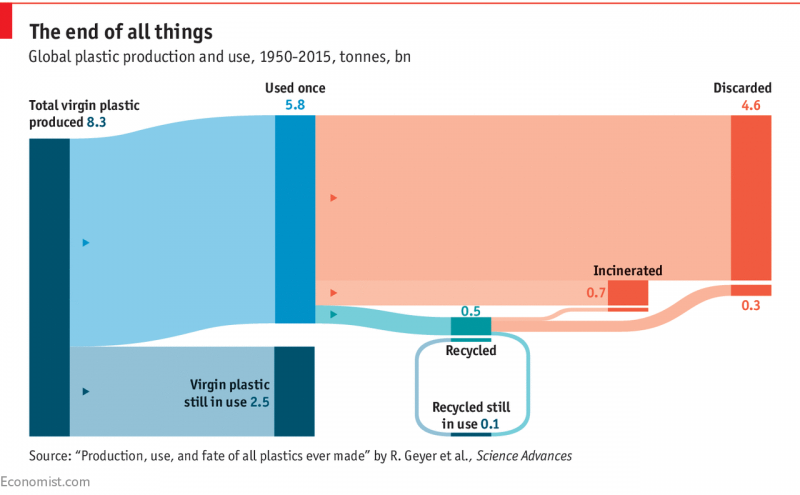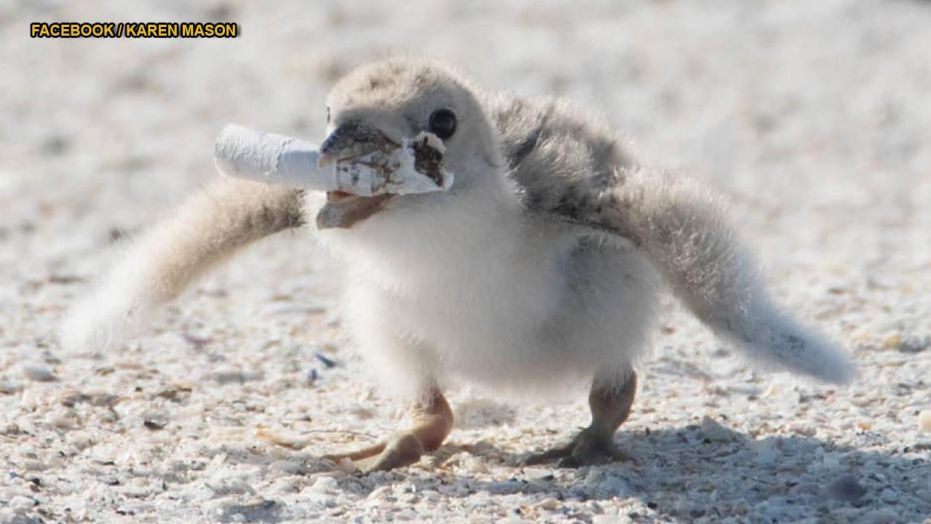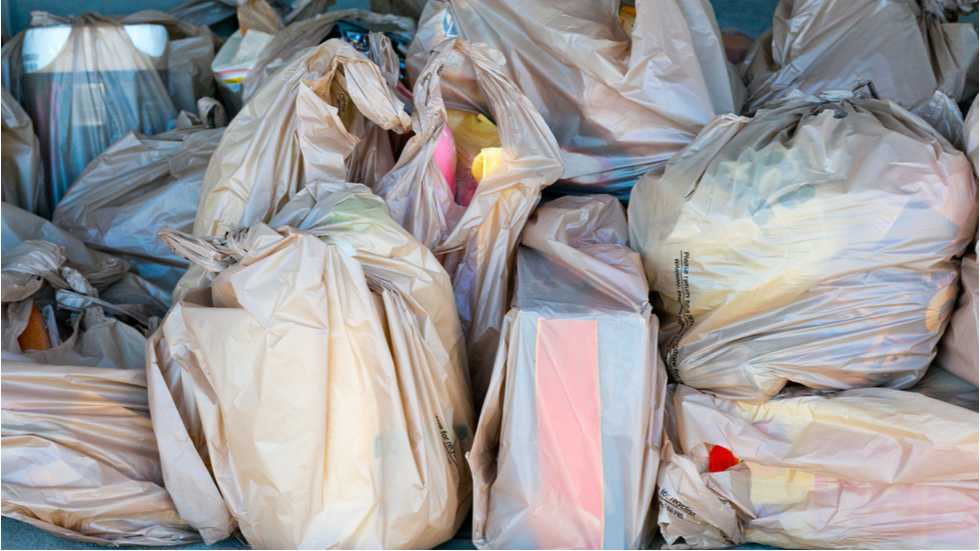I recently came across a link for “Plastic-Free July” in my Facebook feed.[1] As the name would suggest, the mission is to reduce or eliminate plastic use during the month of July. I have kept up with a lot of my habits from my zero-waste Lent this past spring, so much so that I almost never have any plastic to get rid of these days. However, I thought this new challenge was worth a look.
The challenge itself is very personalized, and you can select areas of focus and specific goals. There are basic steps for people just getting started (e.g. refusing plastic straws when going out, using a reusable water bottle instead of a one-time-use plastic one); more advanced steps for people who want to stretch themselves a little (e.g. managing pet waste without plastic bags, using reusable diapers instead of disposable ones); and opportunities to influence others for people who have already adopted a zero-waste lifestyle for themselves (e.g. organizing a cleanup day with your community, contacting your local government officials).
When you take the pledge on the site, as I did, you can check boxes to receive tips and support in certain areas. Mine are making changes with “Local Government” and “My Community.” You can also opt in to specific actions, such as the ones I selected: “Avoid single-use plastic packaging” and “Target takeaway items.” Finally, you can select the time frame for your challenge, and I chose to participate in Plastic Free July for the whole month.
Why “Plastic-Free” in the first place?
The idea behind “Reduce, Reuse, Recycle” was that we were supposed to take those actions in that order. I cannot speak for the rest of the world, or even the rest of the United States, but I know that up until we had some shifts in recycling procedures in Pittsburgh over the last year, some of my friends believed that the more they put in their recycling bins, the better for the environment. This fallacy is, in fact, dangerous for the environment.
A 2017 paper published by a professor at UC Santa Barbara “put the cumulative amount of solid plastic waste produced since the 1950s that has not been burned or recycled at 4.9 billion tonnes,” altogether filling a space roughly the size of Manhattan.[2] Apparently only about 9% of single-use plastics worldwide are recycled. That same study shows that of all the 8.3 billion tonnes of virgin plastic produced between 1950 and 2015, only 0.1 billion tonnes were recycled and are still in use.

Recycling has long been held up as the way to be environmentally friendly. I remember noticing the shift from “trash cans” to “recycle bins” on computer desktops back in the 1990s – even though it was a virtual method of disposal, the imagery was undoubtedly there to remind us to take responsible actions.
Unfortunately, recycling is “too hard in most parts of the U.S. and lacks the proper incentives to make it work well.”[3] Many recycling facilities are not set up to recycle all types of plastic. The Municipal Recycling Facilities (“MRFs”) in Allegheny County, for example, are only set up to process #1 and #2 plastic bottles. Friends and family members of mine do a great job of sorting out their #1 and #2 plastics for the recycling (food containers, trays, boxes, etc.), but those items will only go to a landfill or incinerator in the end.
Plastic production is a resource-intensive process, using primarily natural gas in the U.S., and crude oil globally.[4] We use single-use plastics for a tiny fraction of the time they will be on our planet: a plastic shopping bag is used on average for 12 minutes,[5] but it can persist in the environment for 20-1000 years.[6] Plastics leach chemicals into ground water, and can break down into microplastics, which can be ingested by animals (which can in turn be ingested by us). There are increasingly more gruesome photographs online of animals that have died from plastic entanglement and/or consumption.
We as a species need to undergo a perception shift about how we interact with plastics. Recycling is not the solution; reducing our use in the first place is.

It wouldn’t be called a “challenge” if it weren’t challenging
I already see a couple areas being an issue for me in the coming month, despite the fact that I already try to minimize my plastic purchases. I like to remind people that no decision is ever simple, and there are trade-offs with every choice you make in the name of sustainability. For example…
- I love planting pollinator-friendly flowers, and although I haven’t had time to do much of that this summer yet, July was looking better for spending time in the dirt. However, saving the bees means buying flowers that come in plastic buckets. I have yet to figure out what to do with the mountains of empty plastic buckets in my back yard that have been mounting over the last few years because I just can’t bring myself simply to throw them away.
- In the next few weeks, I’m going to be putting down layers of newspaper and mulch in my garden, first as a weed barrier and second as a way to preserve moisture in the soil as we get into the hot months. However, as sustainable as that is, mulch comes in plastic bags (unless I can find a place that sells and delivers it in bulk).
- I buy biodegradable kitty litter so I can compost our kitties’ waste. Unfortunately, the litter also comes in plastic bags. I have always given myself a pass on that one because I still believe that a yearly average of 5 empty plastic kitty litter bags (total volume approximately 10″ x 4″ x 4″, or 2/3 gallon) in a landfill is not as bad as a yearly average of 52 plastic grocery bags, full of used kitty litter (approximately 52 gallons) in a landfill. But still, if I purchase a bag of my walnut shell kitty litter (which I can’t find in bulk), I will be breaking my single-use plastic packaging pledge.
- The same goes with buying birdseed. My finch mix comes in plastic bags, and I can’t not buy food for the birds. My only option is to try to find a place to buy it in bulk.
Plans for July
I plan to spend my July refusing single-use plastics associated with the food service industry, as I usually do. I will also be more mindful about making sure I have a water bottle with me in the heat of summer, as I have resorted to plastic water bottles on a handful of occasions since the end of my zero-waste Lent.
Since I live a relatively zero-waste life already, my focus for July will be on community and government action. I’m looking forward to suggestions and opportunities from the Plastic-Free July community around engaging others, particularly those with decision-making authority.

During Lent I carried around any non-recyclable, non-compostable waste that I generated, which resulted in a small pile of trash that could fit in my hand and weighed less than one ounce. This time, I would like to do something more impactful: each time I generate a piece of plastic waste (by accident, through lack of forethought, or lack of options), I will reach out to a local government official or community leader about my experiences and why reducing our dependence on plastic is such a necessity.
I hope you can join me for this challenge in a way that works for you!
Let me know about your personal challenge below.
Thanks for reading!
[1] https://www.plasticfreejuly.org/
[2] https://www.economist.com/graphic-detail/2018/03/06/only-9-of-the-worlds-plastic-is-recycled
[3] https://blogs.scientificamerican.com/observations/more-recycling-wont-solve-plastic-pollution/
[4] https://www.eia.gov/tools/faqs/faq.php?id=34&t=6
[5] https://www.5gyres.org/plastic-bags/
[6] https://www.abc.net.au/science/features/bags/
[7] https://www.cnn.com/2019/01/24/health/dirty-truth-about-cigarette-filters/index.html
[8] https://www.wtae.com/article/pennsylvania-blocks-plastic-bag-bans/28225533#
1 Comment
Medieval Gatorade, a Plastic-Free July Recap – Radical Moderate · August 11, 2019 at 10:03 am
[…] you missed the introductory post about my zero-plastic challenge for July, you can read about it here. The purpose behind this pledge was not only to reduce the amount of single-use plastics […]